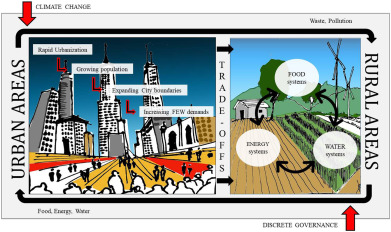Urban resilience refers to the capacity of cities and their communities to absorb, adapt, and recover from shocks and stresses, ensuring that they remain vibrant centers of human habitation and economic activity. It encompasses a multifaceted approach to not only address the acute challenges posed by disasters, such as earthquakes, floods, and fires, but also the chronic pressures like unemployment, housing shortages, or infrastructure decay. As the world continues to urbanize at an unprecedented rate, with more than two-thirds of its population projected to live in urban areas by 2050, the importance of fortifying our cities against such challenges becomes paramount. The concept of urban resilience dovetails seamlessly with the United Nations' Sustainable Development Goals (SDGs), a set of 17 interconnected objectives aimed at promoting prosperity, protecting the planet, and enhancing the quality of life for all by 2030.
The relationship between urban resilience and SDGs is symbiotic. On one hand, building resilient cities directly supports several of the SDGs. For instance, SDG 11 seeks to make cities inclusive, safe, resilient, and sustainable. By enhancing the resilience of our urban landscapes, we ensure that they remain livable and productive, safeguarding the well-being of their inhabitants while promoting economic growth. Additionally, SDG 13, which revolves around taking urgent action to combat climate change and its impacts, is also intertwined with urban resilience. As cities increasingly grapple with the challenges posed by rising sea levels, changing weather patterns, and other climate-induced stresses, bolstering their resilience is a critical component of climate action.
Conversely, the achievement of several other SDGs indirectly strengthens urban resilience. Consider SDG 3, which emphasizes good health and well-being. When urban inhabitants enjoy better health due to improved medical facilities, reduced pollution, and increased access to healthy food, they become more resilient to potential shocks, both mentally and physically. Similarly, SDG 9, which focuses on building resilient infrastructure and fostering innovation, can substantially elevate a city's ability to withstand and recover from disasters. Well-designed and maintained infrastructure, from roads and bridges to power grids and communication networks, ensures continuity and functionality in the face of adversity.
Furthermore, the interconnected nature of SDGs means that strides made in one area can amplify resilience-building efforts in another. For instance, SDG 5, which champions gender equality, can also contribute to urban resilience. Studies have shown that when women are actively involved in decision-making processes, particularly those related to disaster preparedness and recovery, communities tend to have better outcomes due to a more comprehensive approach that takes into account diverse needs and perspectives.
Disaster Resilience and Sustainability, Adaptation for Sustainable Development, 2021, Pages 1-20
This article aims to contribute to current discussions about “making cities inclusive, safe, resilient, and sustainable” (SDG 11) by linking debates that are currently taking place in separate containers: debates on the “global land rush” and the “new urban agenda”. It highlights some important processes that are overlooked in these debates and advances a new, socially inclusive urbanization agenda that addresses emerging urban land grabs.
Aquaponics is an innovative smart and sustainable production system for integrating aquaculture with hydroponic vegetable crops, that can play a crucial role in the future of environmental and socio-economic sustainability in smart cities. These cities aim mobilize all knowledge centers and Information and Communication Technologies (ICT) into innovation hubs in order to strengthen the socio-economic progress.

